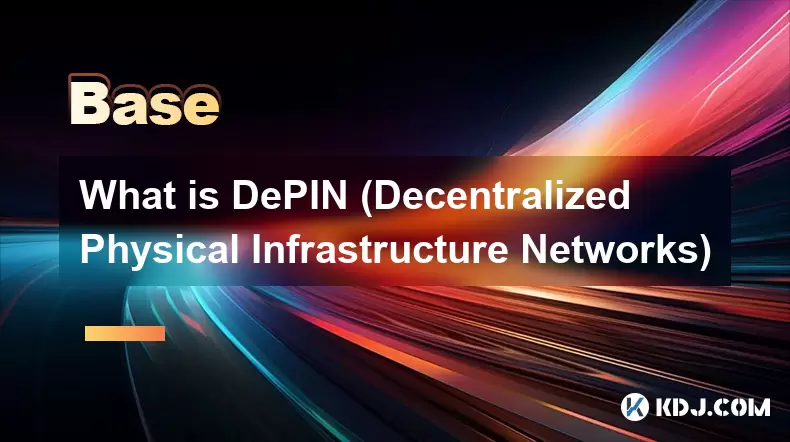-
 Bitcoin
Bitcoin $118,209.3536
1.16% -
 Ethereum
Ethereum $3,151.7546
5.98% -
 XRP
XRP $2.9277
2.35% -
 Tether USDt
Tether USDt $1.0000
0.00% -
 BNB
BNB $689.7099
1.26% -
 Solana
Solana $163.4270
1.91% -
 USDC
USDC $1.0000
0.02% -
 Dogecoin
Dogecoin $0.1983
3.74% -
 TRON
TRON $0.3008
0.51% -
 Cardano
Cardano $0.7435
2.86% -
 Hyperliquid
Hyperliquid $47.6547
-0.48% -
 Stellar
Stellar $0.4625
2.79% -
 Sui
Sui $3.9921
2.71% -
 Chainlink
Chainlink $16.0608
4.23% -
 Hedera
Hedera $0.2348
1.56% -
 Bitcoin Cash
Bitcoin Cash $496.6985
1.25% -
 Avalanche
Avalanche $21.9038
5.41% -
 UNUS SED LEO
UNUS SED LEO $8.8356
-1.88% -
 Shiba Inu
Shiba Inu $0.0...01364
5.31% -
 Toncoin
Toncoin $3.1102
4.35% -
 Litecoin
Litecoin $95.9756
3.59% -
 Polkadot
Polkadot $4.0925
5.78% -
 Monero
Monero $333.7622
-1.44% -
 Uniswap
Uniswap $9.1968
2.25% -
 Bitget Token
Bitget Token $4.6378
6.23% -
 Pepe
Pepe $0.0...01282
6.77% -
 Dai
Dai $1.0002
0.03% -
 Ethena USDe
Ethena USDe $1.0005
0.00% -
 Aave
Aave $329.9143
4.49% -
 Bittensor
Bittensor $441.4995
6.89%
What is DePIN (Decentralized Physical Infrastructure Networks)
DePIN leverages blockchain to decentralize physical infrastructure, enabling individuals to contribute resources like bandwidth or storage and earn rewards.
Jul 16, 2025 at 11:28 am

Understanding the Concept of DePIN
DePIN, short for Decentralized Physical Infrastructure Networks, represents a novel approach to building and managing physical infrastructure using blockchain technology. Unlike traditional centralized models where infrastructure such as telecommunications, energy grids, or data centers are controlled by a single entity, DePIN leverages decentralized networks to distribute control and ownership among participants.
At its core, DePIN integrates blockchain-based incentives with real-world infrastructure deployment. This allows individuals or small organizations to contribute resources—such as storage space, computing power, or internet bandwidth—to a network in exchange for cryptocurrency rewards. These contributions collectively form a functional infrastructure system that operates without reliance on a central authority.
The Role of Blockchain in DePIN
Blockchain plays a pivotal role in enabling the decentralization and transparency of DePIN systems. By utilizing smart contracts, DePIN ensures that contributions are automatically verified and rewarded without intermediaries. For example, if someone contributes their unused Wi-Fi bandwidth to a decentralized telecom network, a smart contract can detect this contribution and issue tokens accordingly.
Moreover, token economics within DePIN systems encourage participation and maintenance of the network. Participants are incentivized not only to join but also to maintain high-quality service levels because their rewards depend on consistent and reliable performance. This creates a self-regulating ecosystem where users act in the best interest of the network’s stability.
Key Components of DePIN Architecture
A typical DePIN architecture consists of several interconnected layers:
- Hardware Layer: This includes the physical devices or infrastructure components contributed by users, such as servers, routers, solar panels, or IoT devices.
- Network Layer: Responsible for connecting individual nodes into a cohesive, distributed system. It ensures seamless communication between different hardware contributors.
- Blockchain Layer: Manages identity verification, transaction recording, and reward distribution through smart contracts.
- Incentive Layer: Utilizes native tokens to motivate user participation and ensure long-term sustainability of the network.
Each layer works in tandem to create a robust infrastructure model that is both scalable and resilient to failures or attacks.
Use Cases of DePIN in Real-World Scenarios
Several projects have already begun exploring the potential of DePIN across various industries:
- Helium Network: One of the earliest adopters of DePIN, Helium allows users to deploy hotspots that provide wireless connectivity in exchange for HNT tokens.
- Filecoin: Although primarily a decentralized storage solution, Filecoin enables a form of DePIN by allowing individuals to offer unused storage space for file hosting.
- Energy Sector: Startups are experimenting with DePIN to enable peer-to-peer energy trading using solar panels and batteries connected via a decentralized ledger.
These examples illustrate how DePIN can disrupt traditional utility services by empowering individuals to become active participants rather than passive consumers.
Challenges and Limitations of DePIN
Despite its promising applications, DePIN faces several challenges:
- Regulatory Uncertainty: Since DePIN often intersects with regulated industries like telecoms and utilities, navigating legal frameworks remains complex.
- Scalability Issues: Maintaining high throughput and low latency across a globally distributed network requires continuous technological innovation.
- Security Risks: With increased decentralization comes the challenge of securing each node against potential breaches or malicious behavior.
- User Adoption Barriers: Many people are unfamiliar with blockchain technology or may be hesitant to participate due to technical complexity or lack of trust.
Addressing these issues will require collaboration between developers, regulators, and end-users to build secure, compliant, and user-friendly systems.
Frequently Asked Questions (FAQ)
Q1: Can anyone participate in a DePIN network?
Yes, most DePIN networks are permissionless, meaning anyone with the required hardware and internet access can join. However, certain networks may impose minimum requirements for hardware specifications or geographic locations.
Q2: How are rewards calculated in DePIN systems?
Rewards are typically based on measurable metrics such as uptime, bandwidth provided, storage capacity, or computational power. Smart contracts automate the process by evaluating these metrics and distributing tokens accordingly.
Q3: Are DePIN networks environmentally sustainable?
Many DePIN initiatives emphasize sustainability by encouraging resource-sharing and reducing redundant infrastructure. For instance, decentralized energy grids promote renewable energy usage and efficient distribution.
Q4: What happens if a node fails or goes offline in a DePIN network?
DePIN networks are designed to be fault-tolerant. If one node becomes unavailable, traffic or tasks are automatically rerouted to other functioning nodes, ensuring continuity of service without centralized oversight.
Disclaimer:info@kdj.com
The information provided is not trading advice. kdj.com does not assume any responsibility for any investments made based on the information provided in this article. Cryptocurrencies are highly volatile and it is highly recommended that you invest with caution after thorough research!
If you believe that the content used on this website infringes your copyright, please contact us immediately (info@kdj.com) and we will delete it promptly.
- Eclipse Airdrop and Token Supply: Navigating the Crypto Landscape
- 2025-07-16 18:50:13
- Solana Price, Zebec Network, and Remittix: Decoding the Crypto Signals
- 2025-07-16 18:30:13
- Crypto Picks & Altcoin Breakout: August's Hottest Trends
- 2025-07-16 18:30:13
- XLM Stellar Analyst Prediction: Is a $10 Target on the Horizon?
- 2025-07-16 19:10:12
- Dubai, Ripple, and Tokenization: A New Era for Real Estate
- 2025-07-16 18:50:13
- Unilabs Finance (UNIL): Primed for a Massive 2025 Launch?
- 2025-07-16 19:15:12
Related knowledge

What is the Bitcoin dominance index
Jul 12,2025 at 10:35pm
Understanding the Bitcoin Dominance IndexThe Bitcoin Dominance Index, often abbreviated as BTC.D, is a metric used to measure Bitcoin's market capital...

What is the Bitcoin dominance index
Jul 11,2025 at 04:29am
What is the Bitcoin Dominance Index?The Bitcoin Dominance Index is a metric used to gauge Bitcoin's market capitalization relative to the total market...

Can crypto be a hedge against inflation
Jul 14,2025 at 12:21am
Understanding the Concept of Hedging Against InflationInflation refers to the general increase in prices and fall in the purchasing value of money ove...

Can crypto be a hedge against inflation
Jul 12,2025 at 12:07pm
Understanding the Role of Blockchain in Decentralized Finance (DeFi)Blockchain technology serves as the backbone of decentralized finance, offering a ...

What are account abstraction wallets
Jul 13,2025 at 01:43am
Understanding the Concept of Account AbstractionAccount abstraction is a term frequently used in the Ethereum ecosystem, particularly within discussio...

What does "gas limit" vs "gas price" mean
Jul 13,2025 at 04:00am
Understanding the Basics of Gas in Blockchain TransactionsIn the Ethereum and other EVM-compatible blockchains, every transaction requires computation...

What is the Bitcoin dominance index
Jul 12,2025 at 10:35pm
Understanding the Bitcoin Dominance IndexThe Bitcoin Dominance Index, often abbreviated as BTC.D, is a metric used to measure Bitcoin's market capital...

What is the Bitcoin dominance index
Jul 11,2025 at 04:29am
What is the Bitcoin Dominance Index?The Bitcoin Dominance Index is a metric used to gauge Bitcoin's market capitalization relative to the total market...

Can crypto be a hedge against inflation
Jul 14,2025 at 12:21am
Understanding the Concept of Hedging Against InflationInflation refers to the general increase in prices and fall in the purchasing value of money ove...

Can crypto be a hedge against inflation
Jul 12,2025 at 12:07pm
Understanding the Role of Blockchain in Decentralized Finance (DeFi)Blockchain technology serves as the backbone of decentralized finance, offering a ...

What are account abstraction wallets
Jul 13,2025 at 01:43am
Understanding the Concept of Account AbstractionAccount abstraction is a term frequently used in the Ethereum ecosystem, particularly within discussio...

What does "gas limit" vs "gas price" mean
Jul 13,2025 at 04:00am
Understanding the Basics of Gas in Blockchain TransactionsIn the Ethereum and other EVM-compatible blockchains, every transaction requires computation...
See all articles

























































































